Ranakpur Jain Temple: A Complete Guide- Location, Timing, History & More.
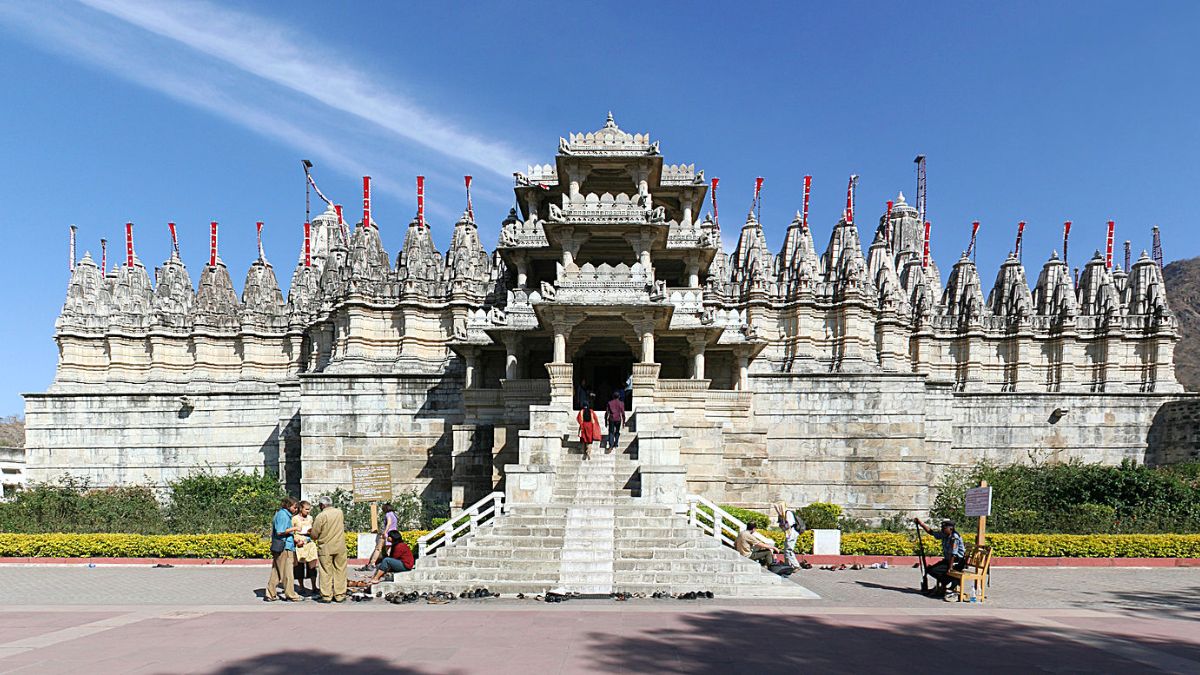
Contents
- About Ranakpur Jain temple
- History of Ranakpur Jain Temple
- Location of Ranakpur Jain Mandir
- Best timings to visit Ranakpur Jain Temple
- Ranakpur Jain Temple Photos
- Ranakpur Jain Temple’s Architecture and its significance
- How to reach Ranakpur Jain Temple?
- Frequently Asked Questions about Ranakpur Jain Temple
Jainism, also known as Jain Dharma, is a religion that originated in India. Jainism’s spiritual concepts and history are traced via the succession of twenty-four Tirthankaras. Today, Jainism is followed across India, although it is most prevalent in the states of Rajasthan and Gujarat. The Ranakpur Jain Temple is a wonderful emblem of Jainism, one of India’s oldest faiths. It is dedicated to Adinatha or Rishabha, the first Jain Tirthankara, and is a Shvetambara Jain Temple, a marble homage to its architectural magic, creativeness, and engineering prowess. In this blog, we provide you with the details of its location, entrance fees, timings for entry, and the easiest path for you to reach.
About Ranakpur Jain temple
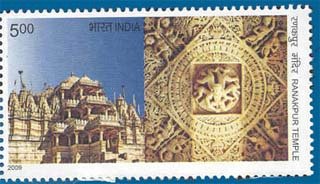
Known as “The White Temple of Ranakpur,” on the banks of the Maghai River lies the lovely white marble edifice, and it is a magnificent treat situated against the Aravalli Hills. Ranakpur Jain Mandirs originate from the 15th century, during the reign of Rana Kumbha, monarch of the Mewar Kingdom, and are named after Rana Kumbha, who was a supporter of the temple and helped build it. The temple is also known by the name “Chaumukha Jain temple”.
History of Ranakpur Jain Temple
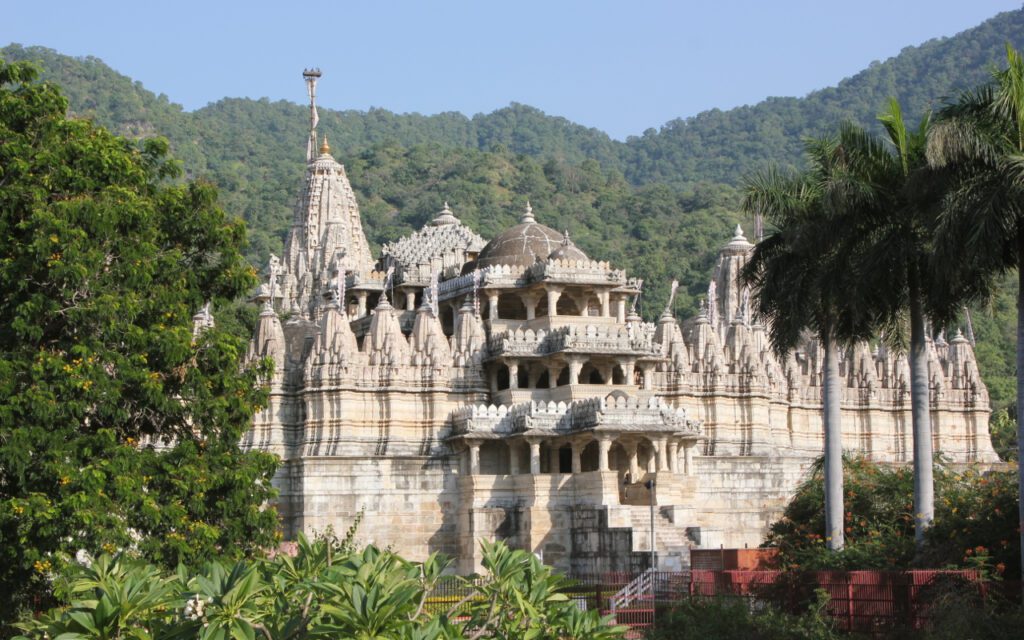
Jain temple at Ranakpurr’s construction began in 1389 and lasted until 1458 CE. However, according to another account, the building lasted until 1496. According to the audio commentary supplied to guests visiting the temple, the construction of the temple took 50 years and included around 2,785 laborers. Darna Shah, a local Jain trader, was inspired to create a splendid temple in the 15th century after having a dream of a heavenly chariot.
Darna Shah commissioned several great painters and sculptors to submit ideas and drawings for the temple, but none matched the splendor he envisioned in his dream. Then, in front of Darna, an architect called Deepak from Mundara presented a proposal that really captivated him. He sought Rana Kumbha, the province’s ruler at the time, for land on which to construct his structure. Rana not only gave him the property, but he also recommended Darna build a village around the shrine.
Location of Ranakpur Jain Mandir
Ranakpur is a hamlet in the Desuri tehsil near Sadri town in Rajasthan’s Pali district in western India. It is about halfway between Jodhpur and Udaipur. In a valley on the western side of the Aravalli Range, 162 kilometers from Jodhpur and 91 kilometers from Udaipur. Tourists can choose between driving or using the bus. If you choose to fly, the nearest airport is Udaipur Domestic Airport, and the distance between Udaipur and Ranakpur Temple is 93 kilometers, or around a 2.5-hour journey. Falna, 36 kilometers distant, has the nearest railway station to the Jain Temple Ranakpur. One may even drive down from Jodhpur or Jaipur, which are 156 and 357 kilometers away from the Ranakpur Jain Temple.
Best timings to visit Ranakpur Jain Temple
During the summer, the temperature in Ranakpur may reach 42 degrees Celsius. During the winter, the lowest is 11 degrees Celsius. From October to March, the winter season at Ranakpur is the optimum time to visit this temple. There is no admission cost to the Ranakpur Jain Temple. However, for cameras and cell phones, this is a minor price of roughly Rs 100. Priests within the temple will assist tourists by explaining the significance and history of the temple, although they may request a gift in exchange.
The temple is open after noon for individuals who choose to pray there. From 12:00 p.m. until 5:00 p.m., travelers are welcome to explore the temple.
Ranakpur Jain Temple Photos

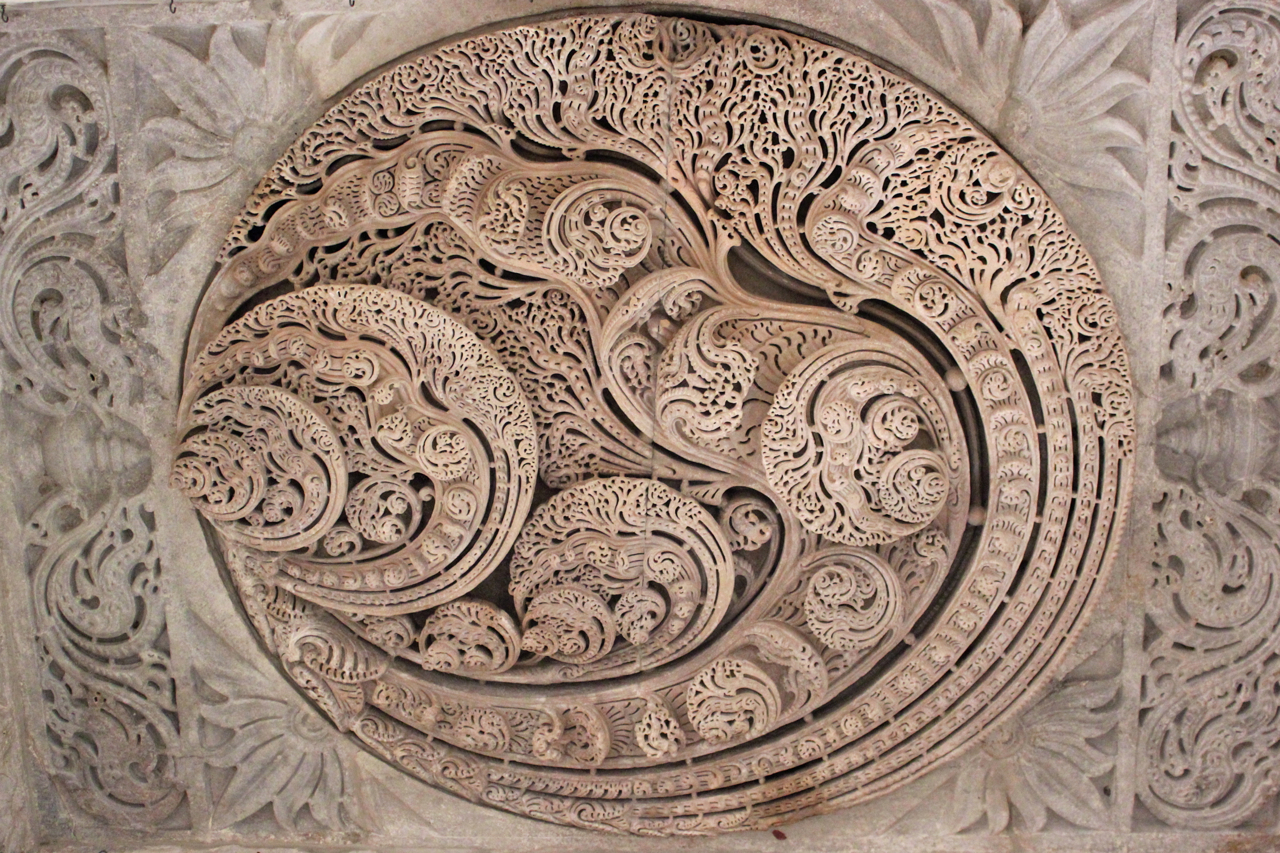
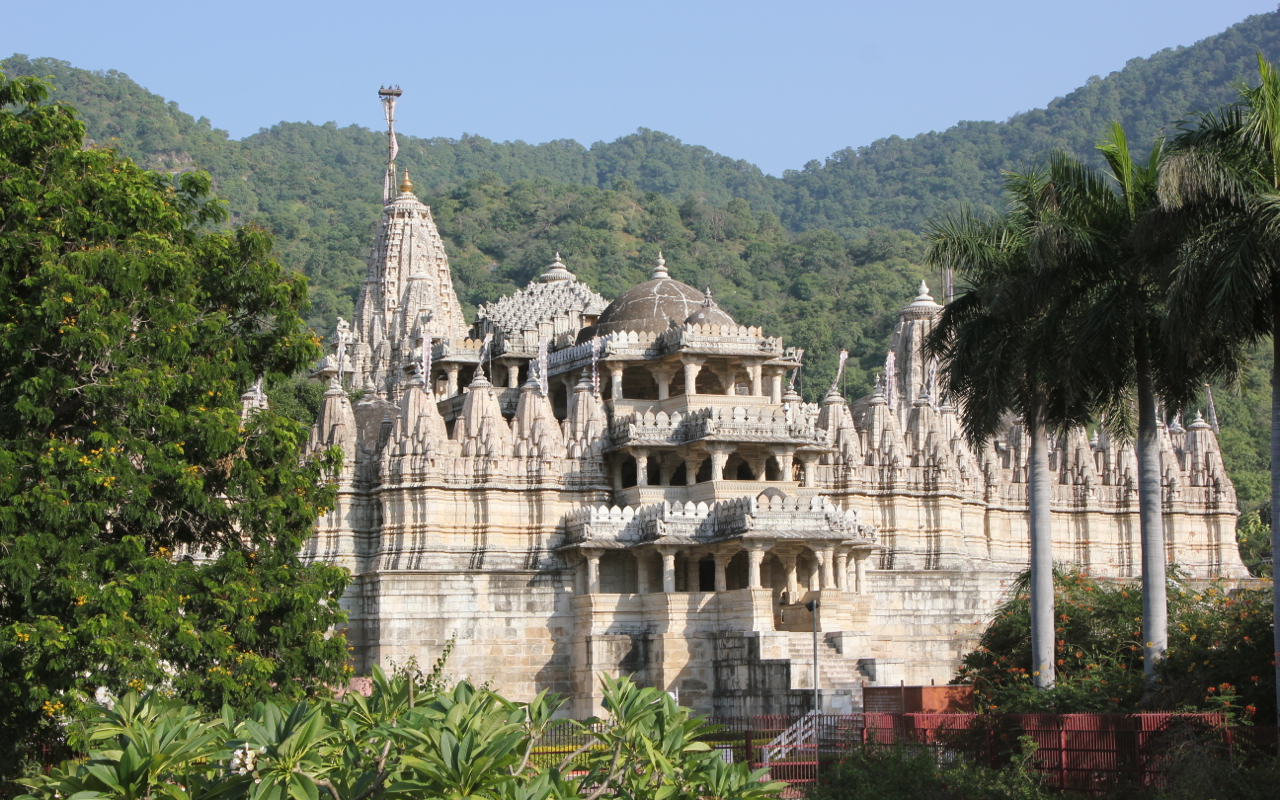
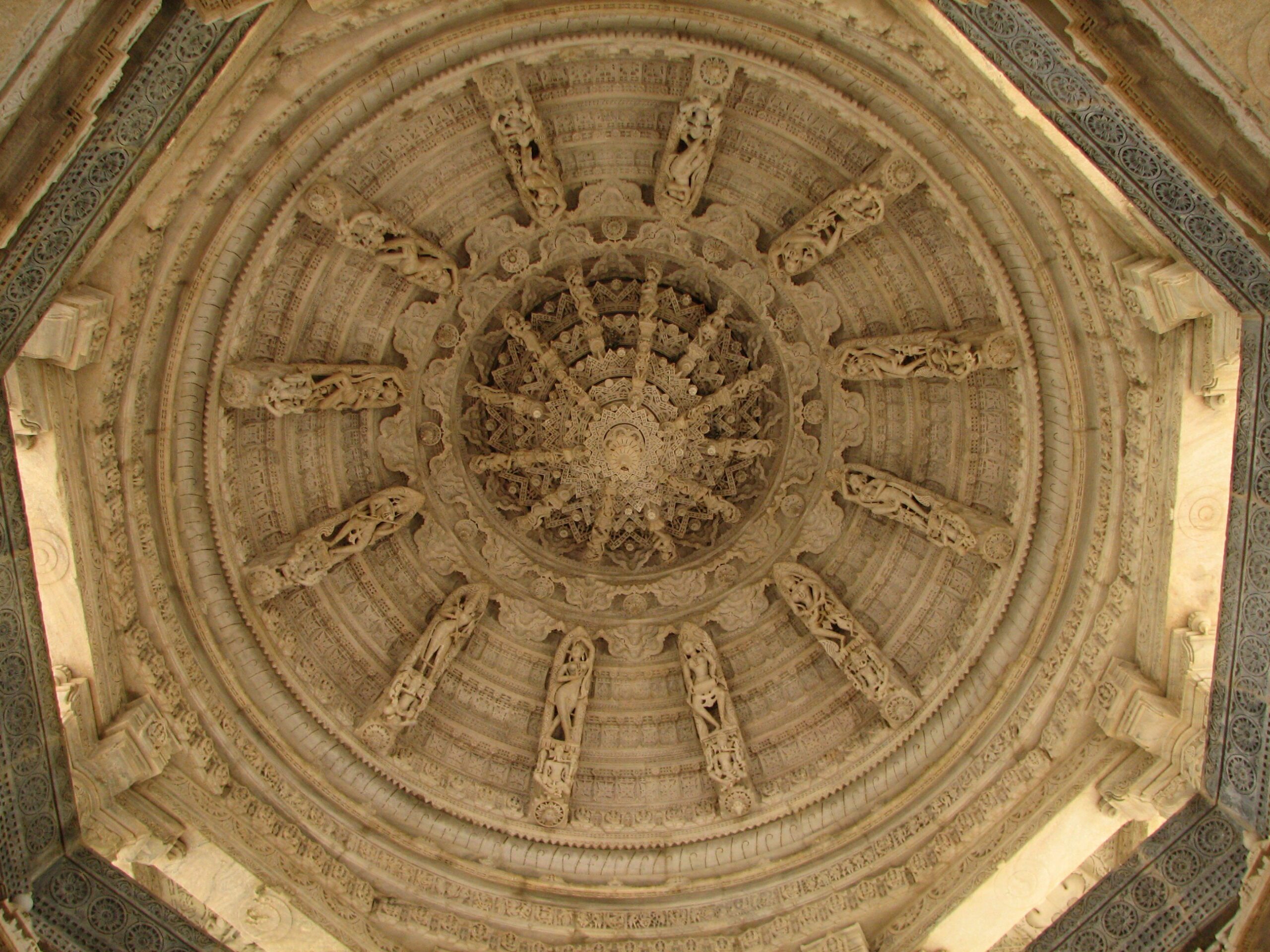
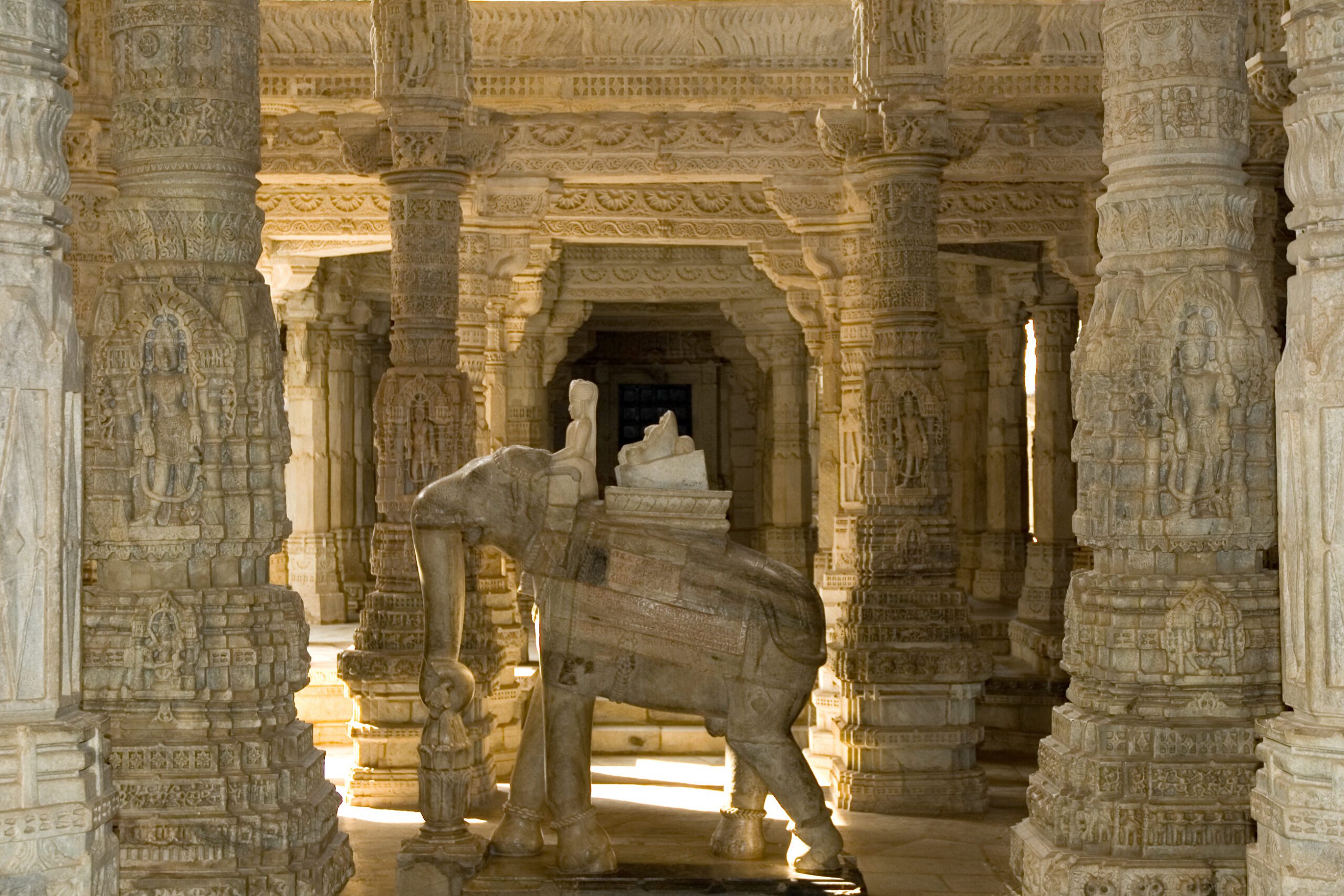
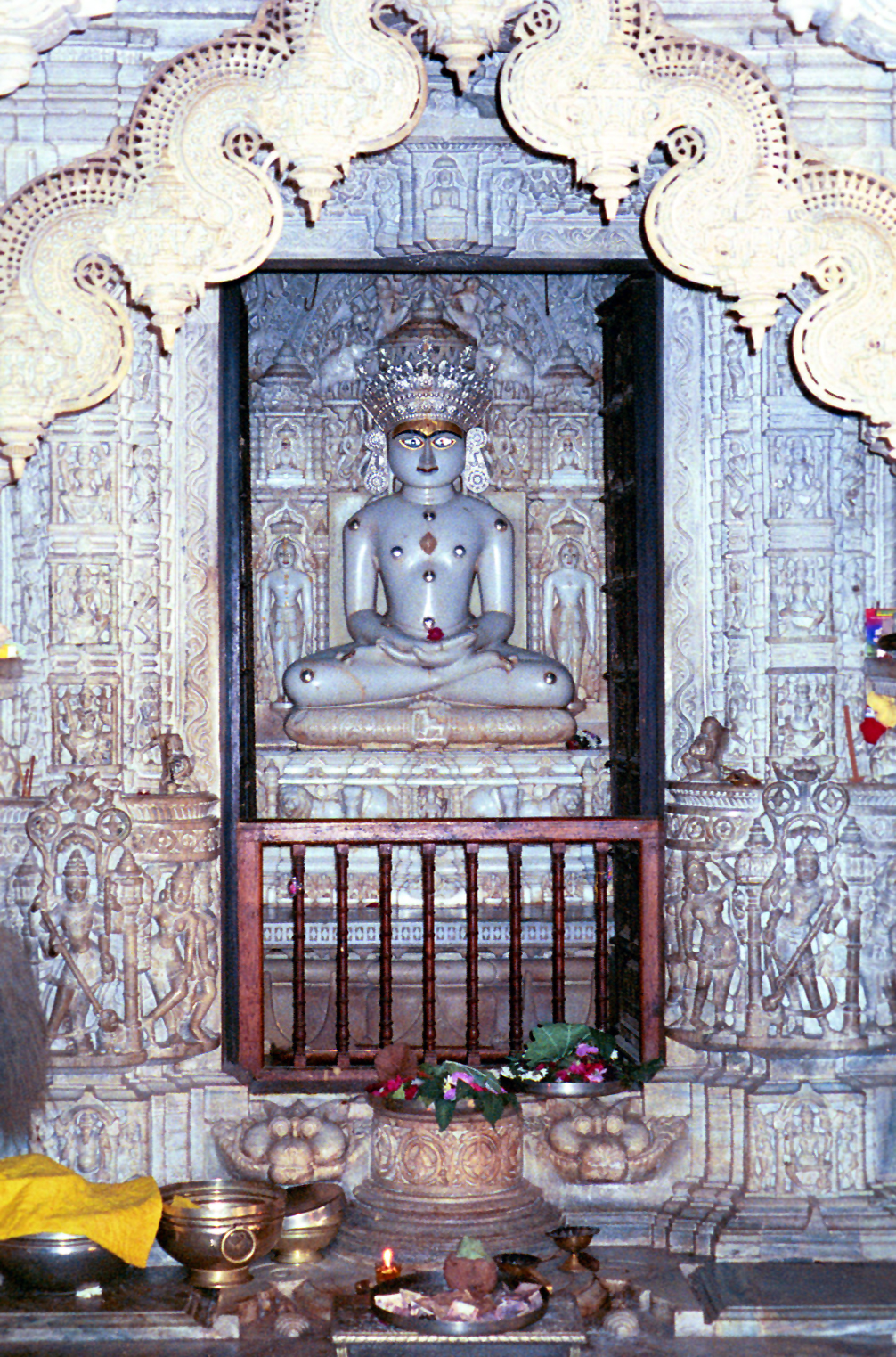
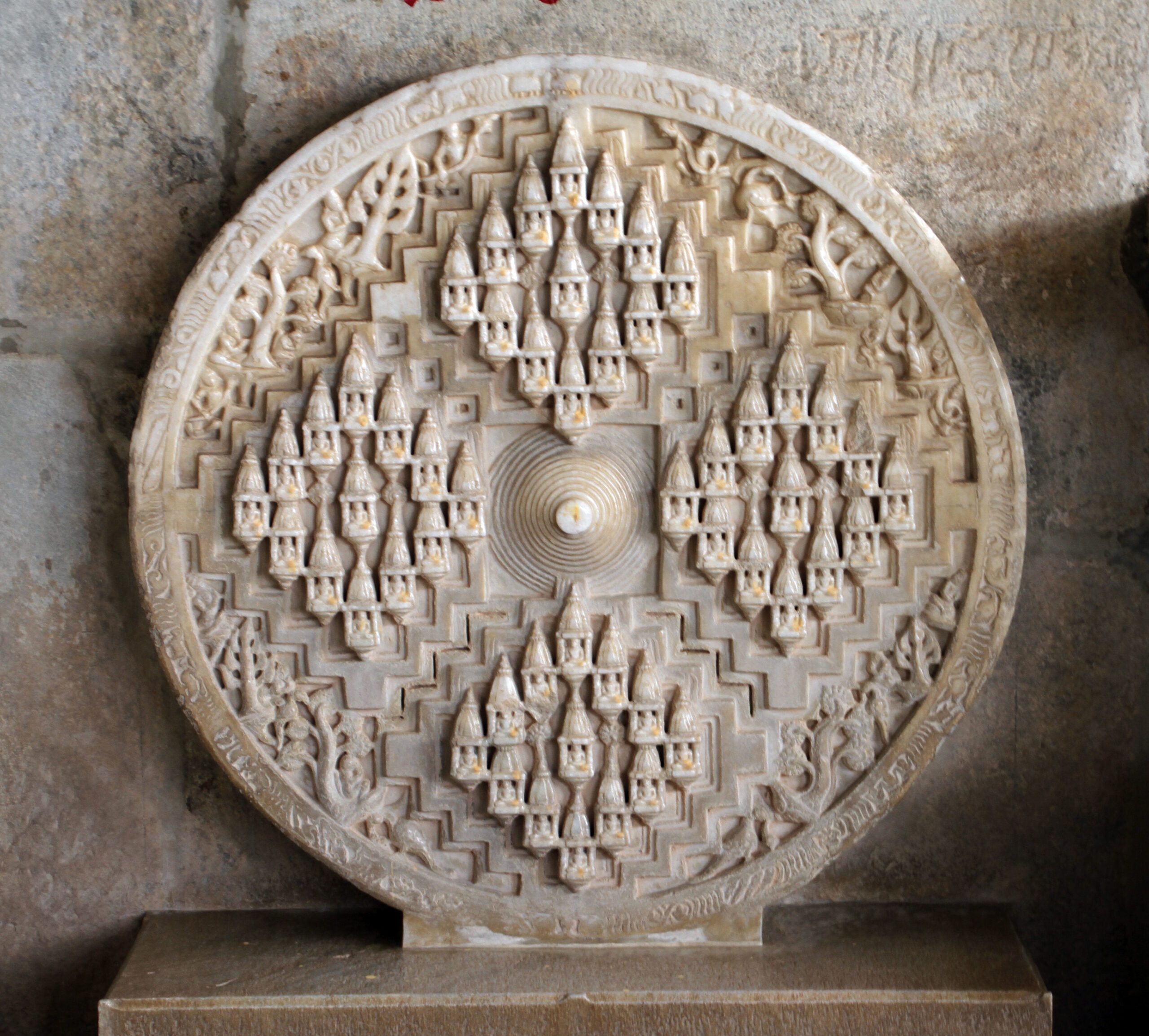
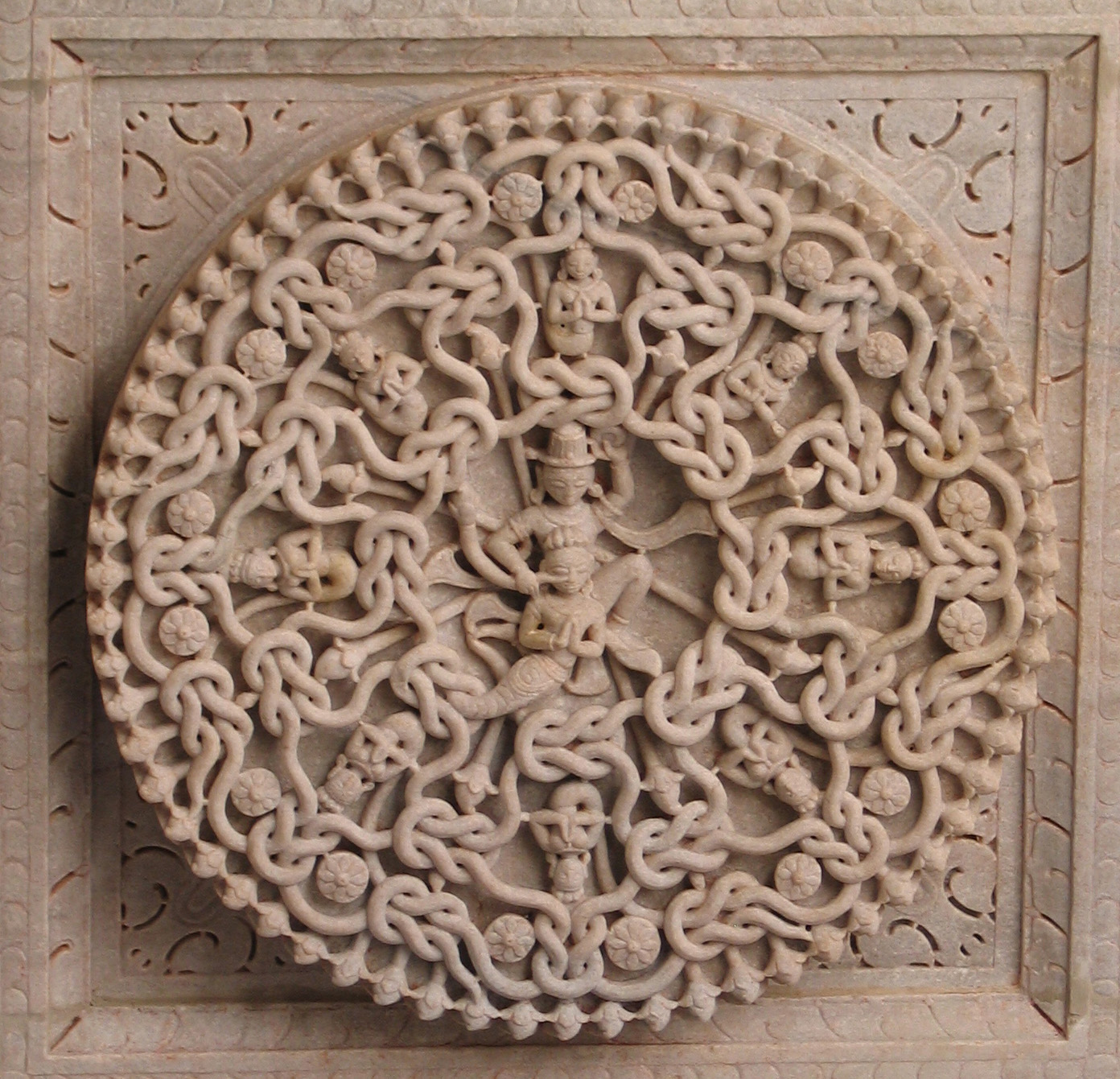
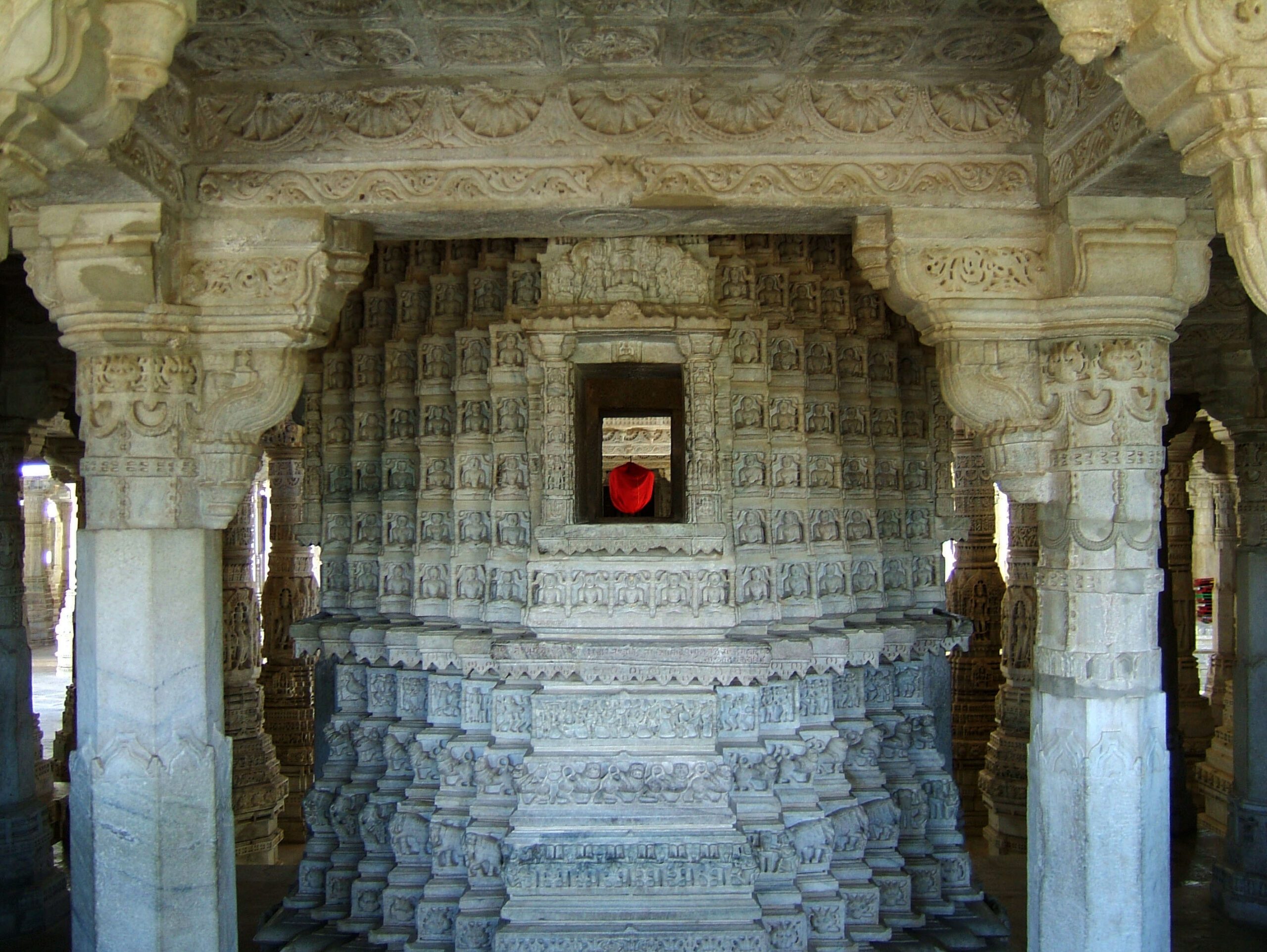
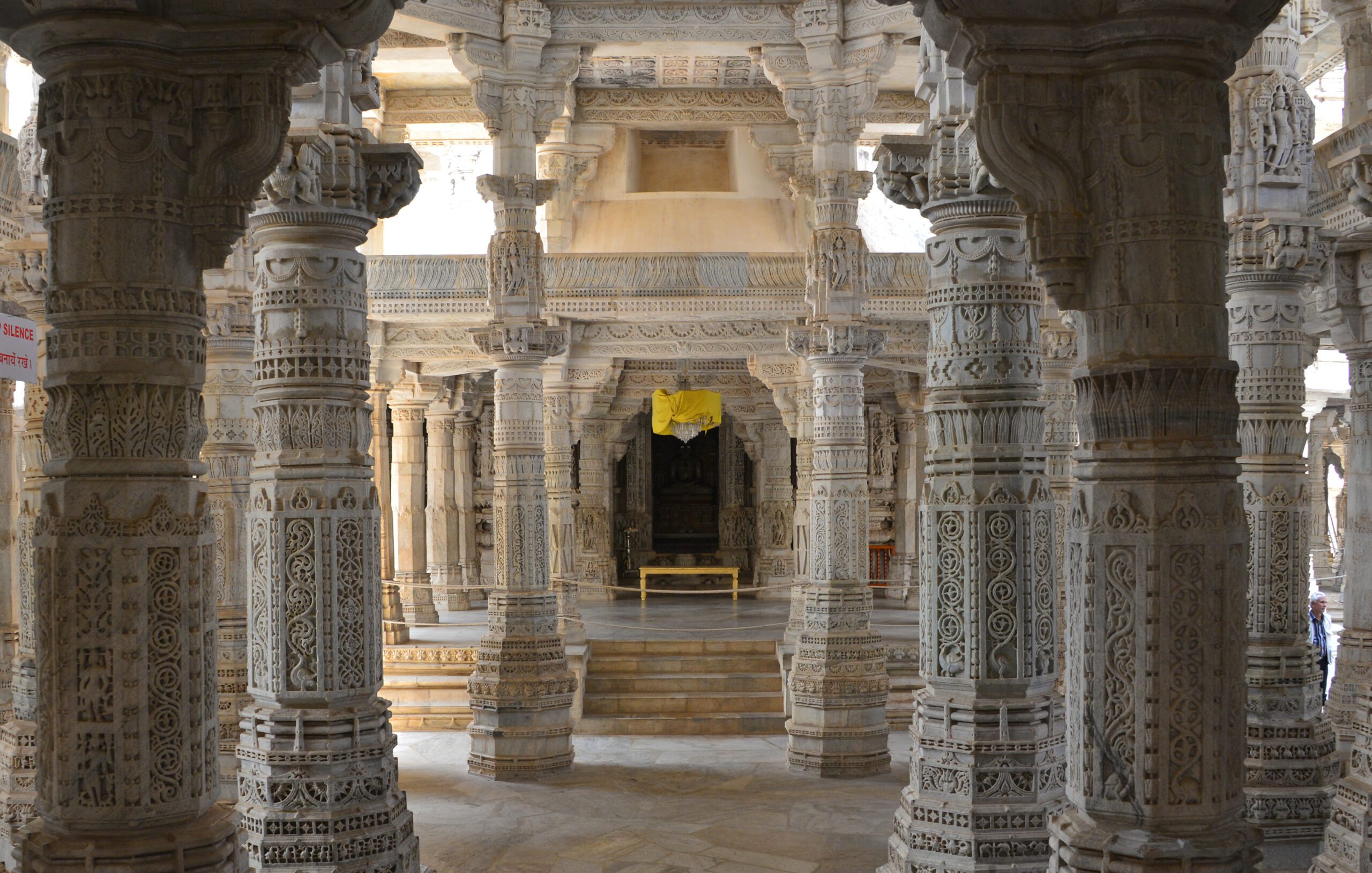
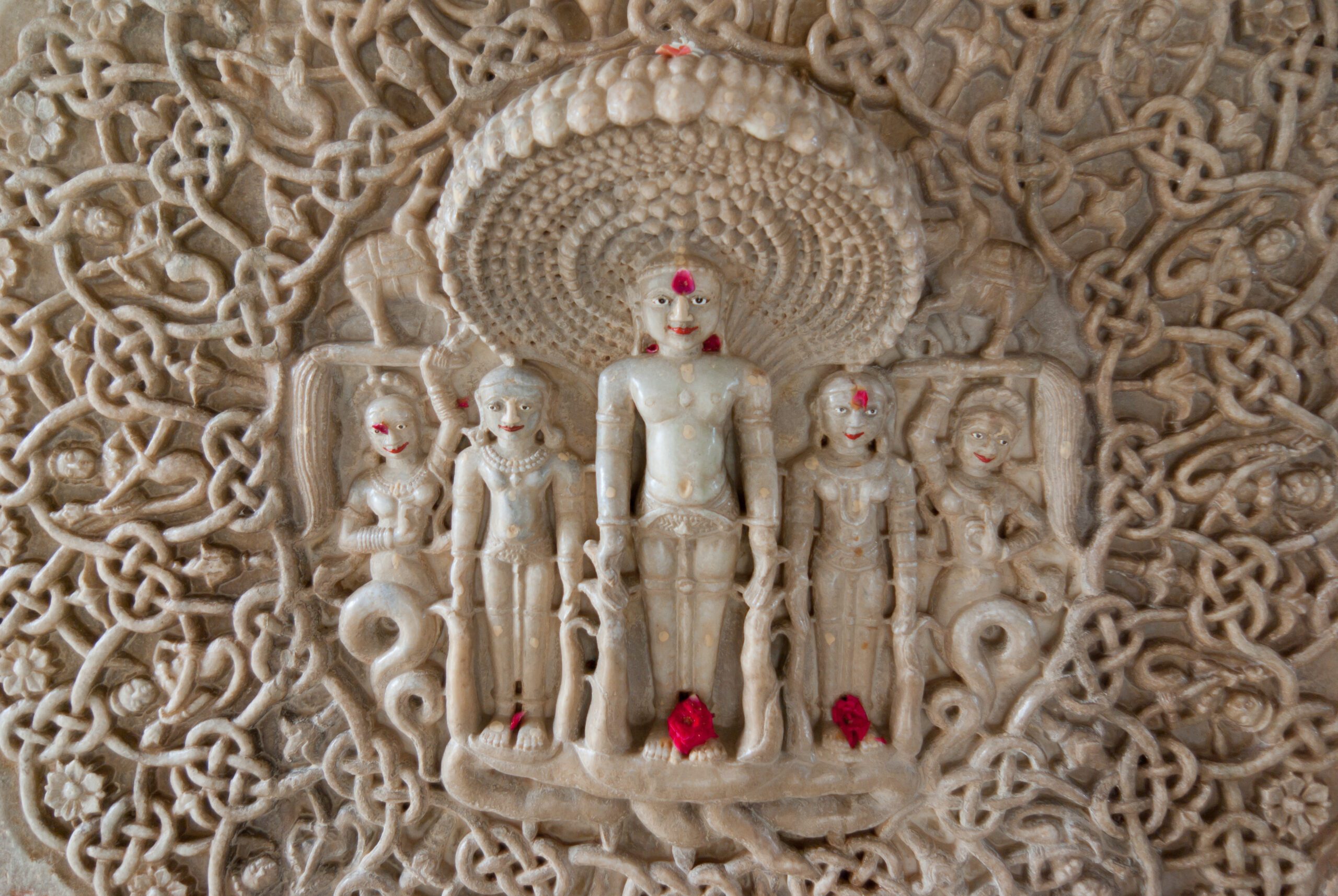
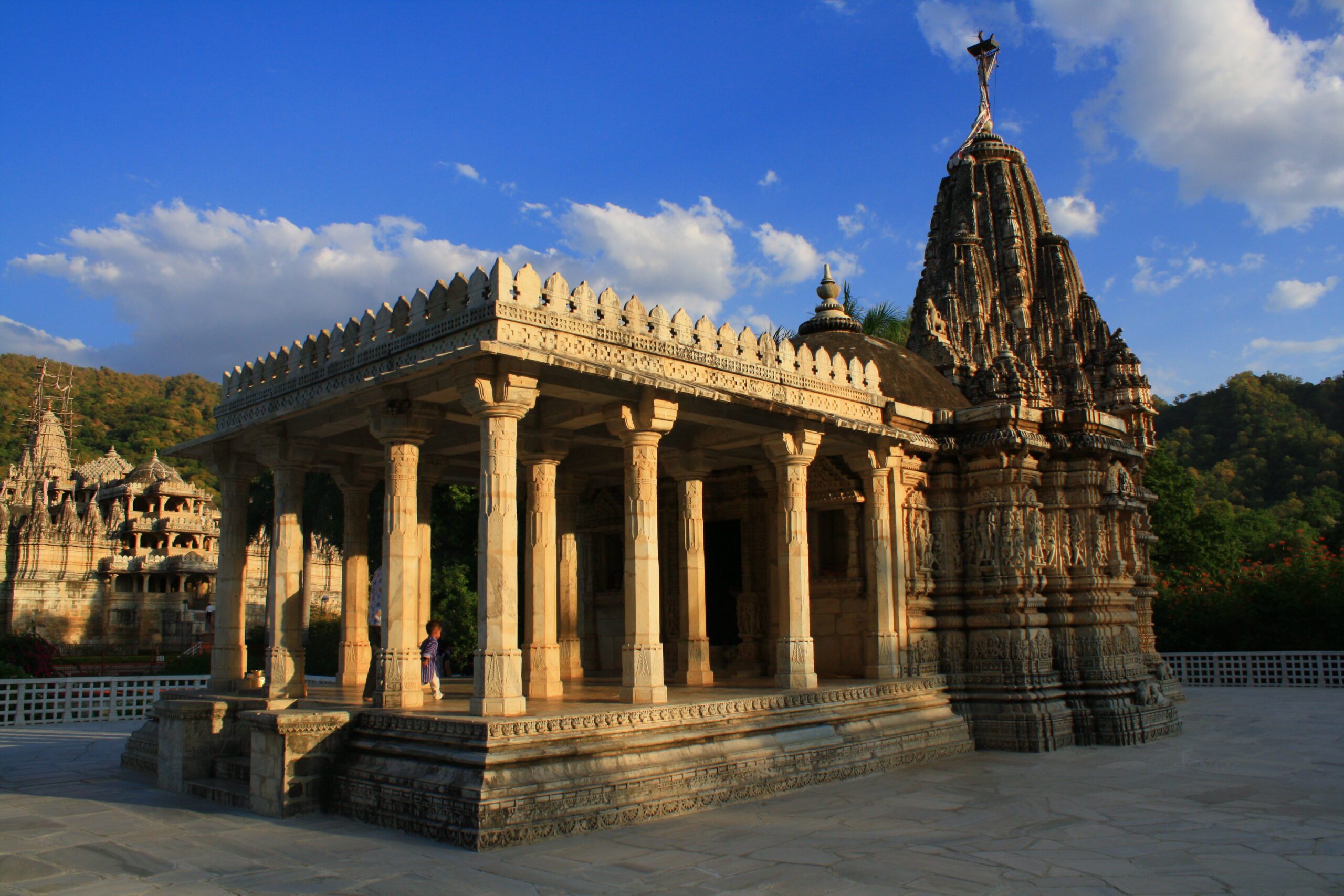
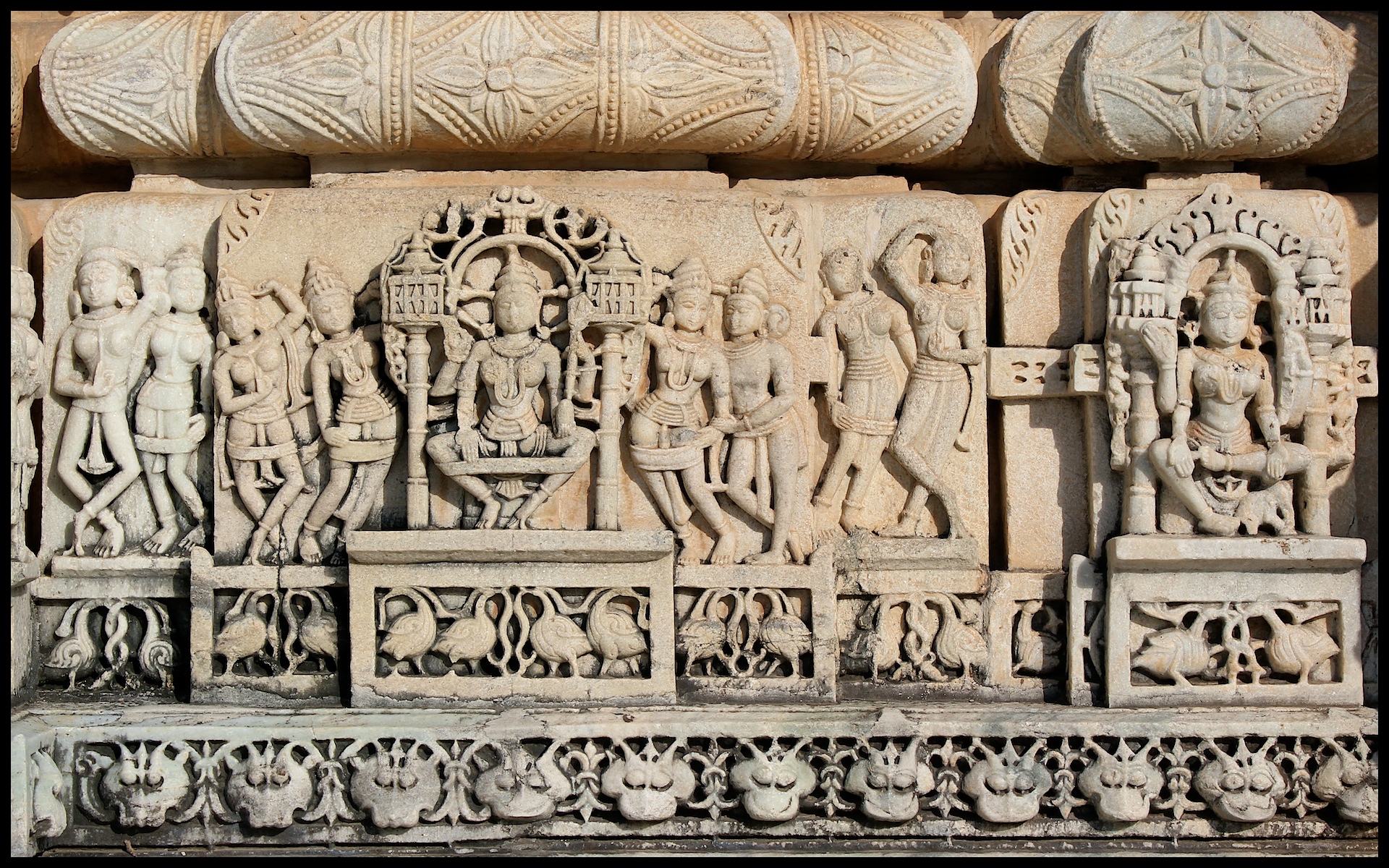
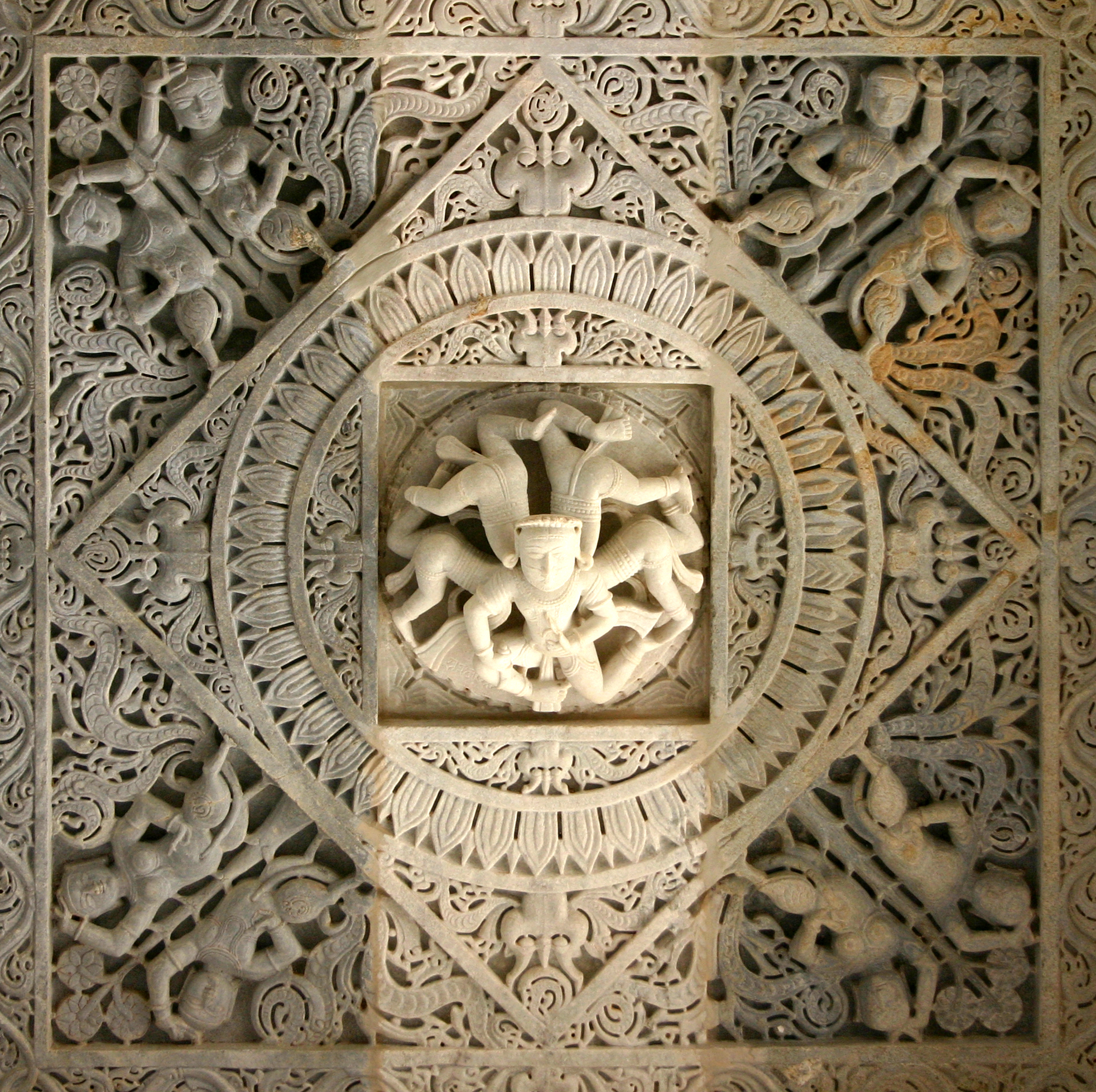
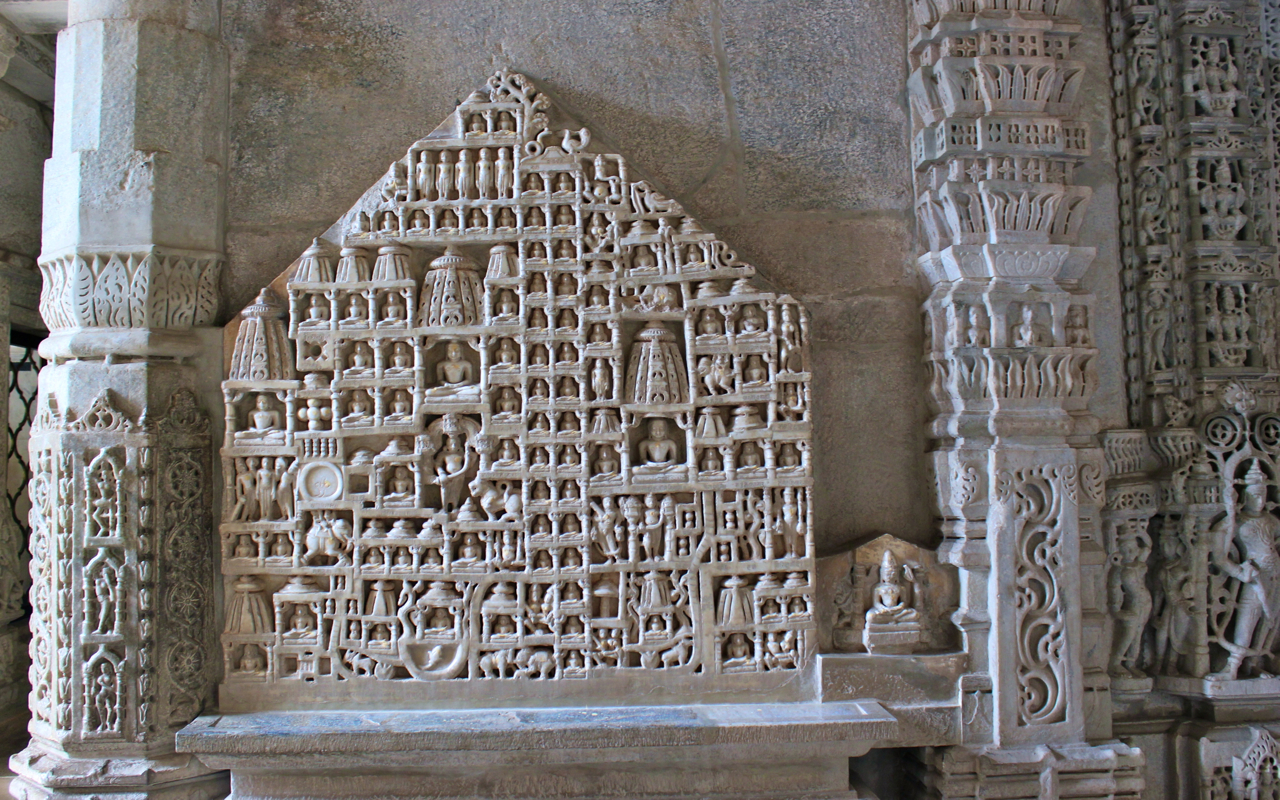
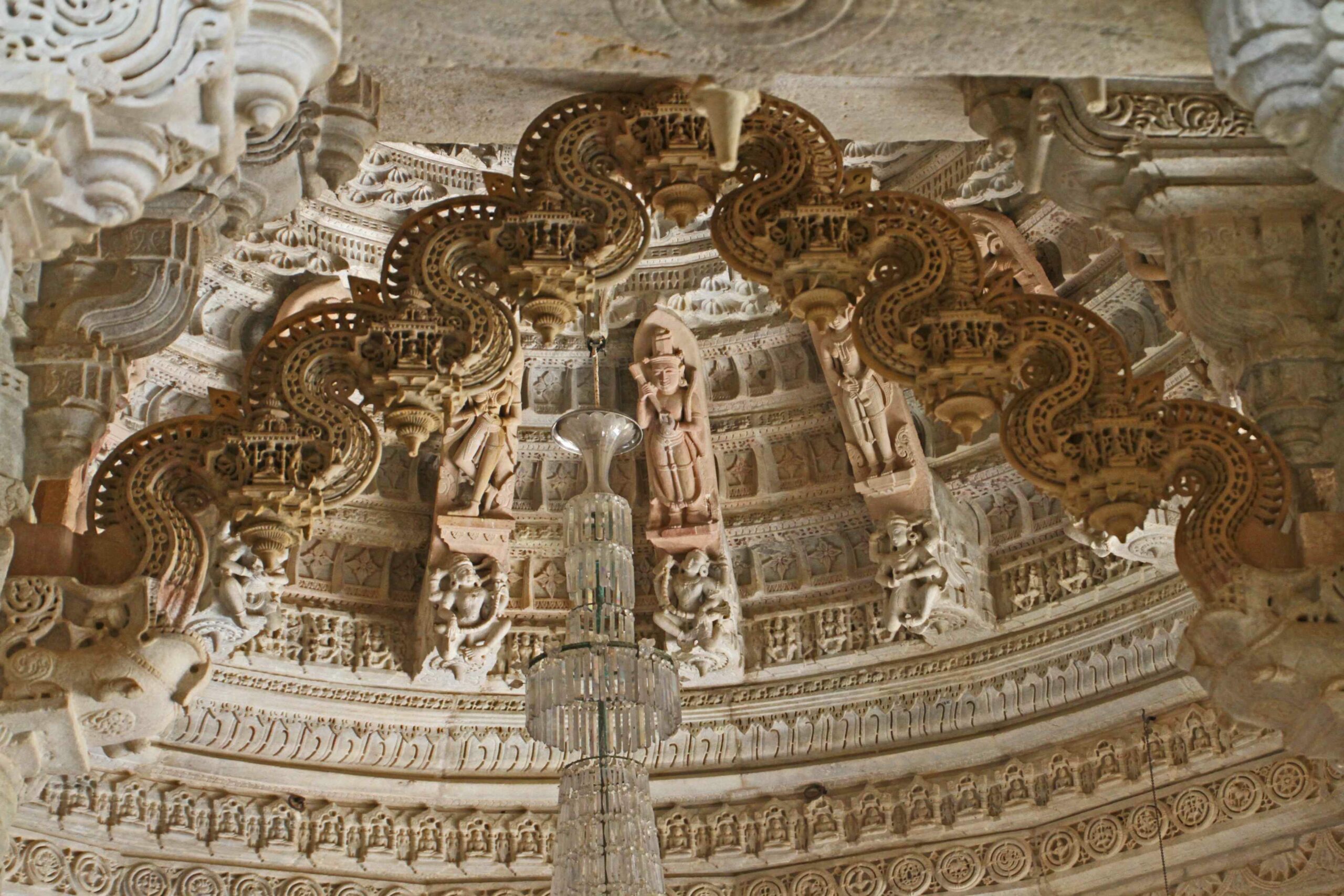
Ranakpur Jain Temple’s Architecture and its significance

The main temple is 48,000 square feet and is built on an elevated platform known as Pithika or Jagati, a frequent feature of Indian temple construction. The temple features four entrances, one in each of the four cardinal directions. A series of steps goes from the ground floor to doors that are intentionally modest and narrow for security purposes. The outside wall erected around the temple is devoid of adornment, with the exception of the four cardinal entry doorways. The temple’s primary entrance is on the western side. A set of steps leads to a three-story “Balanaka,” or entry hall.
On the top story, a dome crowns the entry hall. The temple walls are barren from the outside, and only by looking up can one see the various little shikharas of the Devakulikas, which number 84 and are the smaller temples that are cloistered throughout the inner circumference of the temple.
The major Shikhara is in the middle. The lesser shikharas rise like spires into the azure sky and surround the main shikhara, which rises over the sanctum sanctorum. The many domes that cap the four Meghnad Mandapas or halls that are positioned on the four sides of the sanctum sanctorum are partially visible from ground level. Other domes are the roofs above the Ranga Mandapas, which go directly to the sanctum sanctorum.
The sanctum sanctorum, also known as the Garba Griha, has four entrances facing each of the four cardinal directions. The four Ranga Mandapas are just next to it. When one enters the temple by any of the doorways, one first enters the Meghnad Mandapa, which leads to the Ranga Mandapa, which leads to the Garba Griha door. However, only the main western entrance is accessible.
Whatever way one looks, pillars and pillars huge, tiny, broad, thin, ornate, or plain confront one’s sight. However, the astute designer has organized them so that none of them obscure the vision of the pilgrim seeking a Darshana’ (glimpse) of God. The Lord’s image may be seen from every corner of the temple. These many pillars have given birth to the common misconception that the temple contains 1444 pillars.
How to reach Ranakpur Jain Temple?
Kumbhalgarh fort to Ranakpur Jain temple
Kumbhalgarh Fort is a UNESCO World Heritage Site where you may learn about the fort’s history while admiring its breathtaking views. Ranakpur Jain Temple is a sacred shrine located in Ranakpur, 33 kilometers from Kumbhalgarh Fort and 97 kilometers from Udaipur.
Udaipur to the Ranakpur Jain temple
The distance between Udaipur to the Ranakpur Jain mandir is 352 kilometers. The travel from Udaipur to the Jain temple is roughly 429.5 kilometers and takes approximately 6h 30m. The quickest method to reach Udaipur to Ranakpur Jain temple is via cab and flight, which costs between $6,500 and $14,000 and takes 4 hours and 47 minutes. The cheapest method to reach Udaipur to Ranakpur Jain temple is by rail through Skar, which costs between 1,200 and 2,500 rupees and takes 9 hours and 14 minutes.
A must-visit magnificent artwork if you are traveling to Rajasthan. Visit this famous Jain temple for its beautiful carved idol of Parshvanatha made out of a single marble slab. The idol has 1008 snake heads and numerous tails, and to discover more such interesting facts about it.
Frequently Asked Questions about Ranakpur Jain Temple
- Who built the Ranakpur Jain temple?
Darna Shah, a Jain merchant, erected the Ranakpur Jain Temple in Rajasthan.
- Where is Ranakpur Jain temple?
Ranakpur is situated near Sadri in the Pali district of Rajasthan, India.
- How many pillars are there in Ranakpur Jain temple?
There are 1444 pillars inside the Ranakpur Jain temple.
- How to reach Ranakpur Jain temple?
You can choose to fly, the nearest airport is Udaipur Domestic Airport, and the distance between Udaipur and Ranakpur Temple is 93 kilometers, or around a 2.5-hour journey.
- How much are Ranakpur Jain temple entrance fees?
There is no admission cost to the Ranakpur Jain Temple. However, for cameras and cell phones, this is a minor price of roughly Rs 100. For more Jain Temples, keep following WBDSTBT.in.
